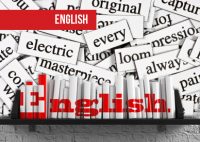Comprehension For SBI PO Set – 43

Comprehension For SBI PO Set – 43
John Maynard Keynes, the trendiest dead economist of this apocalyptic moment, was the godfather of government stimulus. Keynes had the radical idea that throwing money at recessions through aggressive deficit spending would resuscitate flatlined economies-and he wasn’t too particular about where the money was thrown. In the depths of the Depression, he suggested that the Treasury could “fill old bottles with banknotes, bury them at suitable depths in disused coal mines” then sit back and watch a money-mining boom create jobs and prosperity. “It would, indeed, be more sensible to build houses and the like,” he wrote, but “the above would be better than nothing.”
As President-elect Barack Obama prepares to throw money at the current downturn-a stimulus package starting at about $800 billion, plus the second $350 billion chunk of the financial bailout-we all really do seem to be Keynesians now. Just about every expert agrees that pumping $1 trillion into a moribund economy will rev up the ethereal goods-and-services engine that Keynes called “aggregate demand” and stimulate at least some short-term activity, even if it right that there would be more sensible ways to spend it. A trillion dollars’ worth of bad ideas-sprawl-inducing highways and bridges to nowhere, ethanol plants and pipelines that accelerate global warming, tax breaks for overleveraged McMansion builders and burdensome new long-term federal entitlements-would be worse than mere waste. It would be smarter to buy every American an iPod, a set of Ginsu knives and 600 Subway footlongs.
It would be smarter still to throw all that money at things we need to do anyway, which is the goal of Obama’s upcoming American Recovery and Reinvestment Plan. It will include a mix of tax cuts, aid to beleaguered state and local governments and spending to address needs ranging from food stamps to computerized health records to bridge repairs to broadband networks too energy-efficiency retrofits, all designed to save or create 3 million to 4 million jobs by the end of 2010. Obama has said speed is his top priority because the faster Washington injects cash into the financial bloodstream, the better it stands to help avert a multi-year slump with double-digit use the stimulus to advance his long-term priorities: reducing energy use and carbon emissions cutting middle-class taxes, upgrading neglected infrastructure, reining in healthcare costs and eventually reducing the budget deficits that exploded under George W Bush. Obama’s goal is to exploit this crisis in the best sense of the word, to start pursuing his vision of a greener, fairer, more competitive, more sustainable economy.
Unfortunately, while 21st-century Washington has demonstrated an impressive ability to spend money quickly, it has yet to prove that it can spend money wisely. And the chum of a 1 with 12 zeros is already creating a feeding frenzy for the ages. Lobbyists for shoe companies, zoos, catfish farmers, mall owners, airlines, public broadcasters, car dealers and everyone else who can afford their retainers are lining up for a piece of the stimulus. States that embarked on raucous spending and tax-cutting sprees when they were flush are begging for bailouts now that they’re broke. And politicians are dusting off their unfunded mobster museums, waterslides and other pet projects for rebranding as shovel-ready infrastructure investments. As Obama’s aides scramble to assemble something effective and transformative as well as politically achievable, they acknowledge the tension between his desires for speed and reform.
1. John M Keynes was advocate of which of the following suggestions?
(a) Spending money recklessly during recessions is suicidal.
(b) Exorbitant spending during recessions is likely to boost economy.
(c) Aggressive deficit spending is likely to be fatal for economic meltdown.
(d) Government stimulus to economy may not help because of red-tapism.
(e) None of these
2. Which of the following is TRUE about Keynes’ philosophy?
(a) Actual spending money during meltdown is more important than where and on what it is spent.
(b) Government should be selective in approach for spending money during recession.
(c) Filling old bottles with banknotes and burying them is an atrocious proposal.
(d) Creating jobs and prosperity during recessions is almost an impracticable proposal
(e) None of these
3. The author of the passage calls Barack Obama and his team as “Keynesians” because
(a) Barack Obama has been reluctant to follow Keynes’ philosophy.
(b) his team is advising Barack to refrain from Keynes’ philosophy.
(c) Barack Obama and his team have decided to fill old bottles with banknotes.
(d) building houses has been under the active consideration of Barack Obama and his team.
(e) None of these
4. What, according to Keynes, is the “aggregate demand”?
(a) Goods and services sector
(b) Stimulation of a short-term activity
(c) Attempting to rev up the sluggish economy
(d) Pumping one trillion dollars into economy
(e) None of these
5. Highways, bridges, ethanol plants, etc are considered by the author as
(a) reasonably appropriate propositions to spend money on
(b) measures that affect the environment adversely
(c) imprudent proposals to waste money on
(d) tax-saving schemes bestowed on builders
(e) None of these
6. Obama’s upcoming American Recovery and Reinvestment Plan focuses on which of the following?
(A) Recovery of all debts from the debtors in a phased manner
(B) Pumping money very liberally in projects that are mandatory
(C) Investing money recklessly in any project regardless of its utility
(a) A only
(b) B only
(c) C only
(d) B and C only
(e) All A, B and C
7. According to the author of the passage, food stamps, bridge repairs, etc are the projects that
(a) do not warrant urgent spending as they have a lower utility value.
(b) need the least investment and priority as compared to building houses for the needy.
(c) may not have any favourable impact on attempts to counter recession.
(d) have lower value in terms of returns but require major investments.
(e) None of these
8. Obama desires to accelerate the process of pumping money with utmost rapidity as he believes that it would
(A) help create reasonably high employment opportunities.
(B) avoid deflation.
(C) inject cash into the already troubled economy.
(a) A and B only
(b) B and C only
(c) A and C only
(d) All A, B and C
(e) None of these
9. Which of the following is/are corrective measure(s) as part of the long-term priorities of Obama that was an outcome of his predecessor’s regime?
(A) Countering recession through immediate rescue operations
(B) Reining in the budget deficit
(C) Creating a more sustainable economy
(a) A and B only
(b) B and C only
(c) A and C only
(d) B only
(e) None of these
Directions (Q. 10-12): Choose the word which is most OPPOSITE in meaning of the word printed in bold as used in the passage.
10. moribund
(a) declining
(b) waning
(c) thriving
(d) pessimistic
(e) glorifying
11. BELEAGUERED
(a) carefree
(b) harassed
(c) stressful
(d) uneventful
(e) evaporating
12. RAUCOUS
(a) strident
(b) harsh
(c) rough
(d) unprecedented
(e) soft
Directions (Q. 13-15): Choose the word which is most nearly the SAME in meaning as the word given in bold a used in the passage.
13. apocalyptic
(a) unwelcome
(b) disastrous
(c) risk-free
(d) joyous
(e) ceremonious
14. RESUSCITATE
(a) meltdown
(b) devastate
(c) mislead
(d) save
(e) deactivate
15. FRENZY
(a) passion
(b) expression
(c) succession
(d) habit
(e) manifestation
Answer key:
1. (b) 2. (a) 3. (e) 4. (a) 5. (c) 6. (b) 7. (e) 8. (a) 9. (d) 10. (c) 11. (a) 12. (e) 13. (b) 14. (d) 15. (a)


